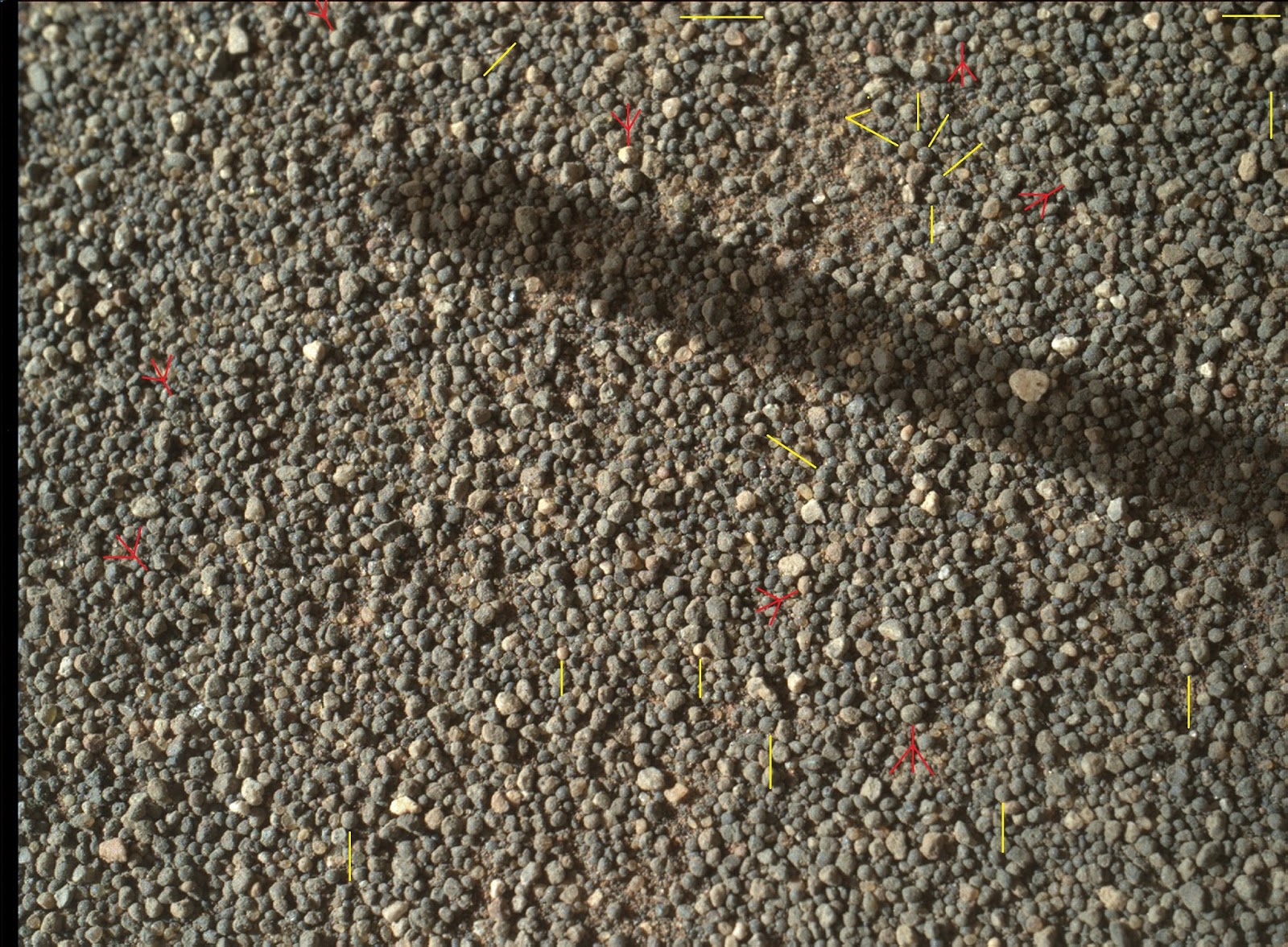

| Online: | |
| Visits: | |
| Stories: |

| Story Views | |
| Now: | |
| Last Hour: | |
| Last 24 Hours: | |
| Total: | |
Mars Life Created Numerous Ooids.
Monday, January 11, 2016 21:50
% of readers think this story is Fact. Add your two cents.
Eight arrows and 17 lines mark ooids found on Bagnold Dune, Gale Crater, Mars. See highest resolution in
https://www.flickr.com/photos/fossil_lin/24328386265/sizes/o/
In fact, only a small portion of the ooids in this figure has been marked. (Red arrows were drawn on Dec. 6, 2015 and yellow lines were drawn on Jan. 12, 2016). The above microscopic image was taken by NASA’s Mars rover Curiosity on Dec. 3, 2015 (Sol 1182) at the edge of High Dune (previously called Bagnold Dune #2), Gale Crater, Mars. They are all smaller than 2 mm across (see scale bar at
In fact, only a small portion of the ooids in this figure has been marked. (Red arrows were drawn on Dec. 6, 2015 and yellow lines were drawn on Jan. 12, 2016). The above microscopic image was taken by NASA’s Mars rover Curiosity on Dec. 3, 2015 (Sol 1182) at the edge of High Dune (previously called Bagnold Dune #2), Gale Crater, Mars. They are all smaller than 2 mm across (see scale bar at
www.flickr.com/photos/105796482@N04/23547408931/sizes/o/ ).
Ooids are usually created by coral and shellfish (see the second paragraph in https://en.wikipedia.org/wiki/Sand).
Ooids are usually created by coral and shellfish (see the second paragraph in https://en.wikipedia.org/wiki/Sand).
Image source:
For more information on Martian ooids, see wretchfossil.blogspot.tw/2015/12/martian-ooids-found-on-s…
Added on Jan. 13, 2016: Reasons for the above claim
1. “Most modern ooids are aragonite”
(quoted from https://en.wikipedia.org/wiki/Ooid#Formation );
2. “The second most common type of sand is calcium carbonate, for example aragonite, which has mostly been created, over the past half billion years, by various forms of life, like coral and shellfish.” (quoted from the second paragraph inhttps://en.wikipedia.org/wiki/Sand ).
(quoted from https://en.wikipedia.org/wiki/Ooid#Formation );
2. “The second most common type of sand is calcium carbonate, for example aragonite, which has mostly been created, over the past half billion years, by various forms of life, like coral and shellfish.” (quoted from the second paragraph inhttps://en.wikipedia.org/wiki/Sand ).
So, ooids were created by past life.



